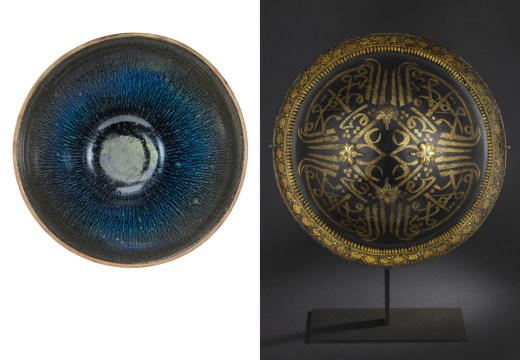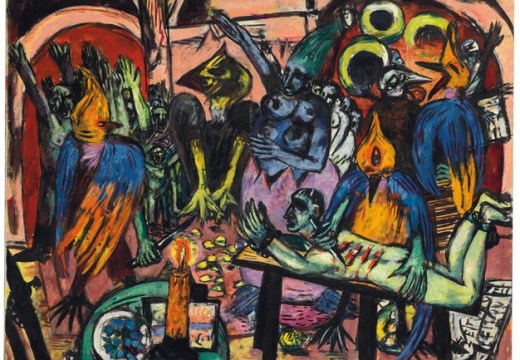Some works of art are perfect expressions of a particular place and time. Such are the stylised gilt-bronze leonine beasts by Gustave Miklos (1888–1967) that represent the epitome of art deco in their streamlined modernism, exoticism, luxurious material, and exemplary craftsmanship. They were made in Paris in 1925 for the great couturier, and arguably even greater collector, Jacques Doucet (the first owner of Picasso’s Les Desmoiselles d’Avignon). It could be argued that Miklos was ‘discovered’ by Doucet; it was Miklos’s own unlikely discovery of the Byzantine world, however, that prompted his distinctive style.
The Hungarian-born artist moved to Paris in 1909 and showed Cubist paintings at the Salon d’Automne and the Salon des Indépendents before volunteering for the French Army at the outbreak of the First World War. Mobilised with the Orient battalion, he was posted to Thessaloniki, and then assigned to the Archaeological Service. It was here that he discovered the rich ornament and intense palette of Byzantine art, which were to inform his subsequent works.
What is striking about this period in Paris is that so many artists worked comfortably and freely at the intersection of art, craft, and industrial design. On his return to Paris in 1919, Miklos began to explore a huge variety of materials – lacquer, enamel, wood, rock crystal, and a variety of metalworking techniques – before focusing his energies on sculpture. He developed an increasingly pure and minimalist vocabulary that is hard to define, but invariably contained a hint of otherworldly mystery.

Deux bêtes affrontées (1925), Gustave Miklos. Courtesy Sotheby’s
This unique pair of lacquer-ornamented bêtes affrontées – often described as andirons – are strange and slightly fantastical, and seem to bear more than a passing nod to Assyrian, Egyptian, and African sources. They are among several pieces that Doucet commissioned and subsequently lent to an exhibition of Miklos’s work in 1928. In the preface to the catalogue Doucet described how he had been one of the first to savour the delights of the artist’s ‘byzantine modernism’. Also among the loans was a pair of palm wood and red lacquered bronze bench seats; these were sold for €1.7m at the sale of the collection of Yves Saint-Laurent and Pierre Bergé. In Doucet’s Studio House in Neuilly, they had come across a Pierre Legrain console behind a Miklos rug – both now in the Musée des Arts Decoratifs in Paris.
The beasts now take pride of place in the sale of what remains of the private collection of the art nouveau and art deco dealer Alain Lesieutre and his wife Ginette, at Sotheby’s Paris on June 29. The flamboyant and often financially pressed dealer had been obliged to offer them in an earlier auction, but ensured that they were estimated at a price that rendered them unsaleable. Now they come with an estimate of €250,000-€350,000, a snip for something that comes with the imprimatur of the great Doucet.
Unlimited access from just $16 every 3 months
Subscribe to get unlimited and exclusive access to the top art stories, interviews and exhibition reviews.














![Masterpiece [Re]discovery 2022. Photo: Ben Fisher Photography, courtesy of Masterpiece London](http://www.apollo-magazine.com/wp-content/uploads/2022/07/MPL2022_4263.jpg)
It’s time for the government of London to return to its rightful home